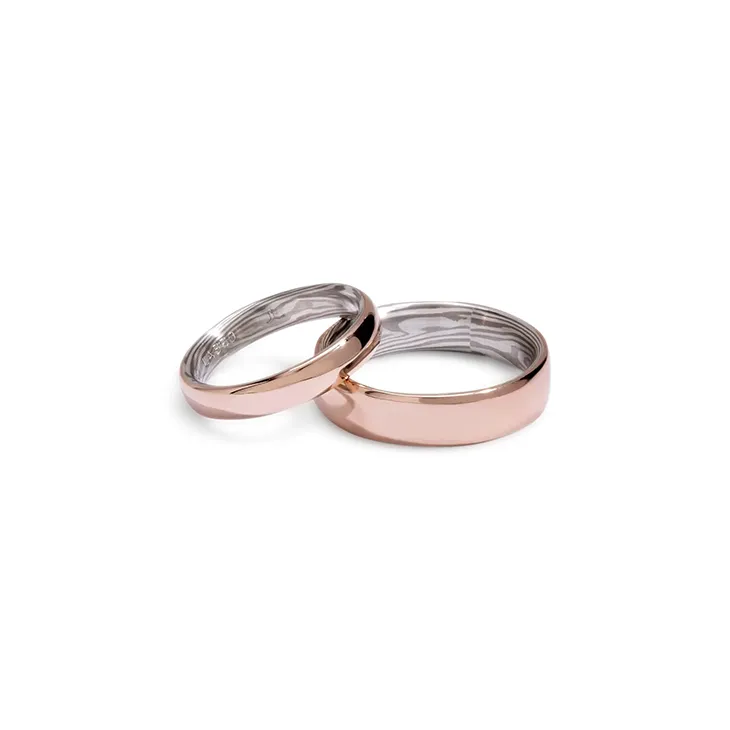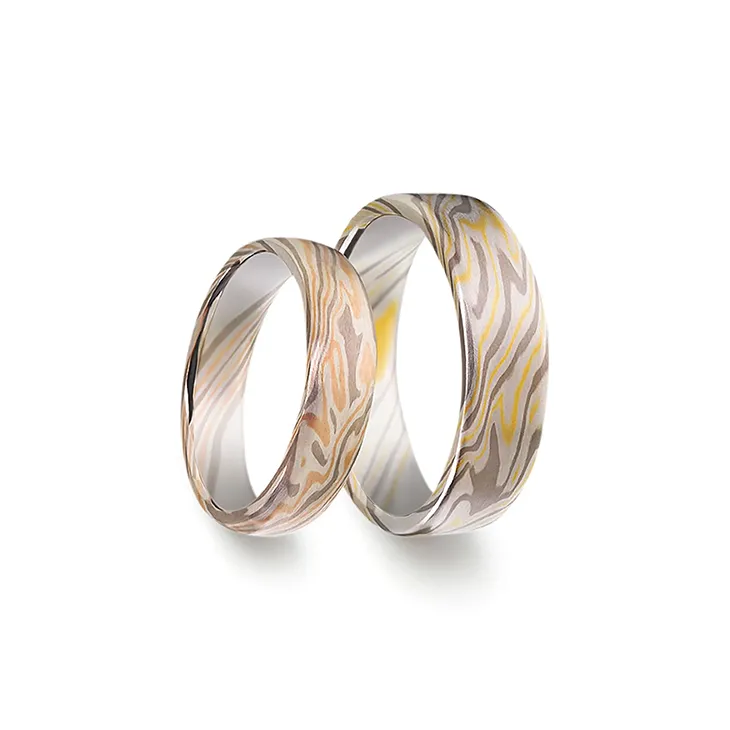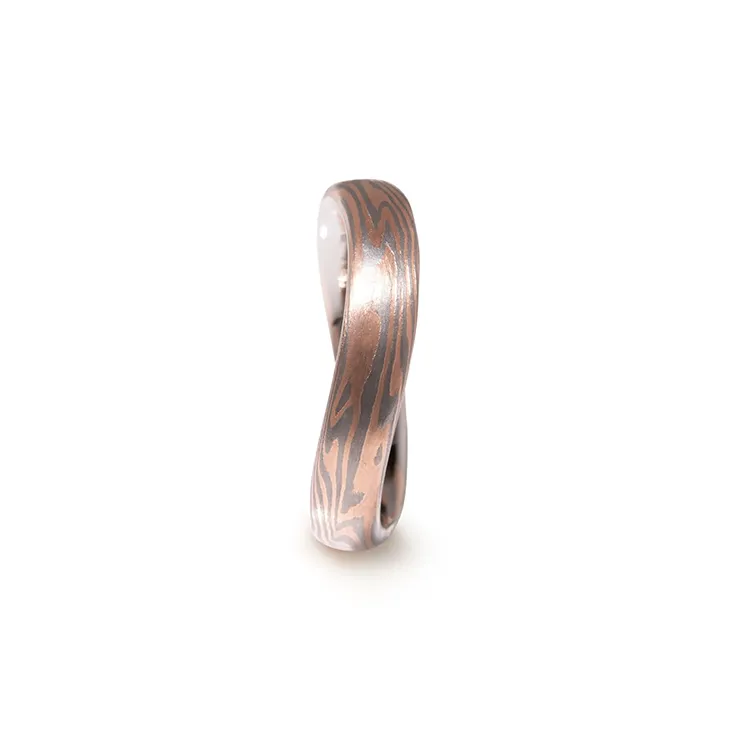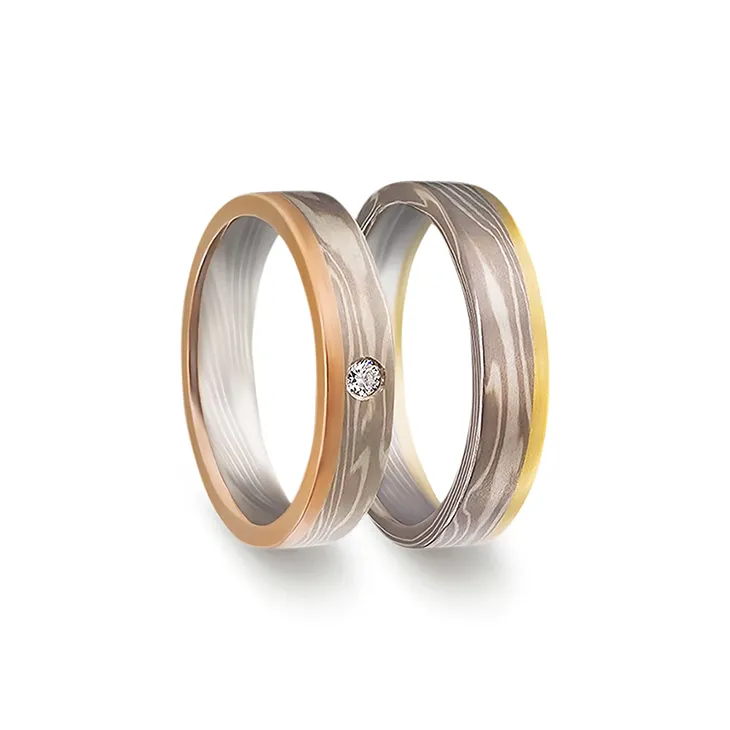
The gleaming display case at your local jeweler looks different these days. Where there were once clearly divided sections for “his” and “hers” wedding bands now sits an array of rings that refuse to be categorized. This shift isn’t just about jewelry – it’s reshaping how couples approach one of marriage’s most enduring symbols.
As more couples reject outdated wedding traditions unisex bands have emerged as powerful symbols of evolving attitudes toward marriage and partnership. Let’s explore how these versatile rings are changing the landscape of modern matrimony.
The Evolution of Wedding Band Design
Remember when wedding bands came with an implied gender? Men got plain thick bands while women wore delicate rings often designed to complement their engagement diamonds. Those days are fading fast. Today’s couples are asking a different question: “Which ring speaks to us?” rather than “Which ring fits our assigned roles?“
The shift started subtly. Some jewelers noticed women gravitating toward wider bands while men expressed interest in more decorative designs. What began as occasional requests soon became a steady demand for options that worked for anyone regardless of gender. This organic evolution reflected changing attitudes about marriage itself.

Materials That Tell New Stories
Modern metallurgy has revolutionized what’s possible in ring design. Traditional yellow gold has been joined by an array of materials that offer both practical and aesthetic advantages. Tungsten cobalt and titanium create incredibly durable bands that resist scratching and maintain their finish through years of daily wear.
But it’s not just about durability. These contemporary materials come in subtle variations of gray black and white creating sophisticated options that appeal across the gender spectrum. Rose gold once marketed primarily to women has found a broader audience appreciative of its warm unique tones.
Design Elements That Unite
Today’s unisex wedding bands incorporate elements that transcend traditional gender associations. Clean architectural lines create bold statements while mixed metal combinations offer visual interest without feeling traditionally feminine or masculine. Texture has become a key design element with hammered finishes brush strokes and geometric patterns adding character without crystals or curves.
Some couples choose matching bands with subtle variations – perhaps different widths of the same design or complementary patterns that create a cohesive pair without being identical. It’s about harmony rather than uniformity.
The Cultural Shift
A quiet revolution has been taking place in jewelry stores across the country. Where once stood rigid divisions between men’s and women’s wedding bands now flows a more fluid, expressive approach to these symbols of commitment. It’s not just a trend – it’s a reflection of deeper changes in how we view relationships and identity.
But it’s not just about gender identity. Modern couples often prioritize practicality and personal meaning over tradition. A rock climber might choose a low-profile band that won’t catch while scaling walls. An artist might select a design that celebrates their appreciation for clean lines and negative space.

Investment in Values
Here’s something interesting: while unisex wedding bands often cost less than traditional wedding sets many couples are choosing to invest in higher-quality materials and craftsmanship. The money saved by skipping conventional his-and-hers sets frequently goes toward pieces that better reflect their values whether that’s environmental sustainability ethical sourcing or supporting independent artisans.
Some jewelers report that conversations with customers now focus more on the story behind the rings – where materials come from how they’re crafted and what makes them unique. It’s less about following traditions and more about creating new ones.
Practical Considerations
Here are a few practical considerations to keep in mind when it comes to wedding bands:
Designing for Daily Life
Let’s talk about real life for a moment. Wedding bands need to survive countless hand washings keyboard typing gym sessions and whatever else life throws at them. Unisex designs often excel here incorporating practical features that benefit everyone:
- Low-profile settings that don’t snag on clothing
- Comfort-fit interiors that slide easily over knuckles
- Durable finishes that maintain their appearance with minimal maintenance
- Versatile styles that work in both casual and formal settings
This focus on functionality doesn’t compromise style – if anything it has pushed designers to create more innovative solutions that look as good as they feel.

Making the Choice
Selecting unisex wedding bands involves different considerations than choosing traditional rings. Couples often focus on:
- How the ring fits their lifestyle and daily activities
- Whether they want matching bands or complementary designs
- Which materials best suit their preferences and practical needs
- How the design reflects their relationship and values
Many find that removing gender from the equation actually makes choosing easier. Instead of working within prescribed limitations they can focus on what genuinely appeals to them as individuals and as a couple.
The Future of Wedding Jewelry
As more couples choose unisex bands the jewelry industry continues to adapt. Designers are creating collections that focus on versatility and personal expression rather than gender-specific styles. This shift has sparked innovation in both materials and design approaches.
Some jewelers now organize their collections by style or material rather than gender making shopping more inclusive and focusing on what really matters to modern couples. It’s a change that reflects broader social shifts toward seeing marriage as a partnership of equals.
Traditional jewelers are reimagining their approach to wedding bands. Many have expanded their unisex offerings noticed increasing interest from couples seeking alternatives to conventional choices. This evolution extends beyond just the products – it’s changing how jewelry is marketed displayed and discussed with customers. Small designers and independent artists have found particular success in this space often leading the way with innovative designs that larger brands later embrace.
Finally, the shift toward unisex wedding bands signals something deeper than changing fashion preferences. These rings tell us about a fundamental change in how today’s couples see marriage – not as a set of rigid roles, but as a genuine partnership where shared values and personal authenticity matter more than traditional expectations.
These versatile rings prove that tradition and innovation can coexist beautifully. They offer couples the freedom to choose symbols that truly represent their relationship while maintaining the timeless significance of the wedding band. As we continue to redefine what marriage means in contemporary society these rings stand as powerful symbols of love that knows no boundaries.
All images from Jaume Labro.



